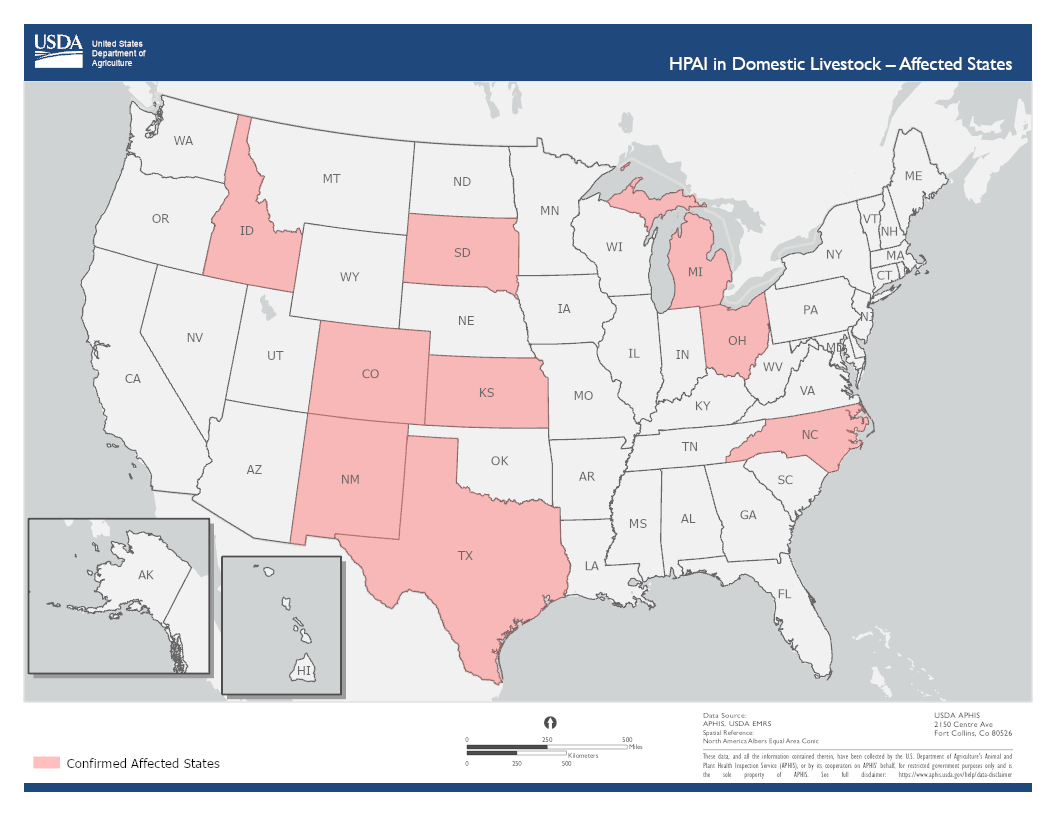Curious if the bird flu is close to your area? The CDC's new dashboard can help you track it
As bird flu continues to spread among America's dairy cows, the Centers for Disease Control and Prevention has made it easier for the public to track how close the outbreak might be to their area.
Drawing on data from 600 wastewater sampling sites across the U.S., the federal agency created an interactive map showing current influenza A levels in comparison to the same sites' levels during flu season last year. The CDC said once virus levels are at the 80th percentile or higher, it'll work to better understand why cases are rising there.
Data from the two most recent weeks of wastewater samples show 230 sites across 34 states met the criteria for influenza A virus analysis, and three sites from three states — Saline County in Kansas, Pinellas County in Florida, and Kane County in Illinois — were at the high level, being greater than the 80th percentile.
The one disclaimer with the new dashboard is that wastewater monitoring methods at these sites don't have the ability to distinguish which subtype of influenza A is detected, like whether it's H5N1 bird flu or the seasonal flu virus. But the CDC says most of the latter flu time activity peaks between December and February, so new spikes in wastewater influenza A detection are likely indicative of a bird flu outbreak in the area.
Wastewater monitoring data also can't show where the influenza A originated, like whether it's from a human, an animal or an animal product. But the CDC says it has other surveillance systems to complement these lapses.
The bird flu virus was first confirmed in the U.S. on March 25 from dairy cattle in the Texas panhandle region. As of Wednesday, 42 herds in nine states have been affected by the virus.

USDA
However, dairy farmers have been reluctant to report outbreaks within their cattle, creating gaps within testing and tracking capabilities. This prompted a federal order to be put in place since April 29 requiring testing be done prior to interstate travel for lactating dairy cattle, and instating mandatory reporting of positive influenza A test results. The USDA also announced last week up to $28,000 in assistance to farmers who have been affected by the spread of the virus.
Since the first case, the CDC said it's monitored at least 260 people, with one case in a Texas dairy worker being identified as H5N1. The person, who is only the second person to ever contract the virus in the U.S., has since recovered.
Rare human bird flu infections can occur when the virus gets into a person's mouth, nose, eyes or is inhaled, according to the CDC. Most cases have occurred when a person has close or unprotected contact with sick birds or their habitats. Ensuing illnesses can range in severity from no symptoms to mild infections or severe pneumonia that result in death, the agency said.
The CDC says the current risk to the general public amid the bird flu outbreak is low, but it recommends people exposed to birds or infected mammals should be cautious.
Grocery store milk containing viral remnants is still safe due to the pasteurization process killing the virus, according to the FDA, but it's unknown whether the same can be said for raw milk.
Both the CDC and FDA recommend against drinking raw milk because high levels of H5N1 have been found in supplies, and if a person consumes raw milk containing the live virus, the person can theoretically become infected "by the virus binding to a limited amount of virus receptors in the upper respiratory tract or by aspiration of virus into the lower respiratory tract where receptors that A(H5N1) viruses can bind to are more widely distributed," the CDC says.
Despite the warning, NielsenIQ reported that since March 25 weekly sales of raw milk have increased by 21% to 65% compared to the same periods a year ago.
